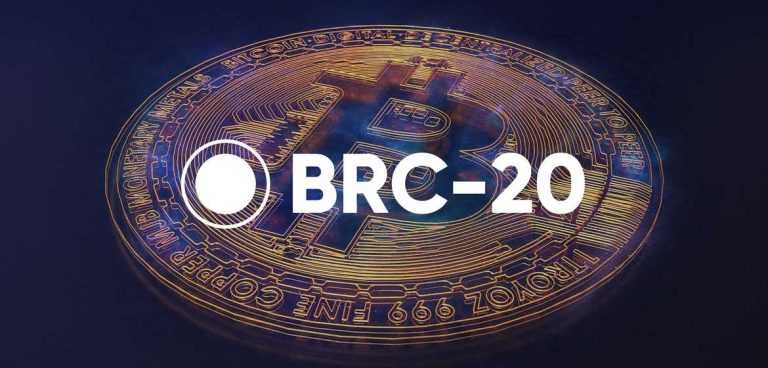What are Stablecoins?
Stablecoins are cryptocurrencies designed to maintain a stable value by pegging themselves to another asset, whether it’s a fiat currency like the U.S. dollar, a commodity like gold, or even an algorithmically controlled mechanism. Unlike the more volatile cryptocurrencies such as Bitcoin, stablecoins offer a reliable medium of exchange without the wild price fluctuations.
Types of Stabecoins
- Fiat-Collateralized Stablecoins:
Fiat-collateralized stablecoins are linked to the value of traditional fiat currencies such as the U.S. dollar. These stablecoins are supported by a reserve of fiat currency held in bank accounts, ensuring a 1:1 pegging ratio. Transparency and regular audits are crucial for maintaining trust in these stablecoins. Popular examples include:
- Tether (USDT): Tether is backed by reserves of U.S. dollars and is widely used across cryptocurrency exchanges.
- TrueUSD (TUSD): TrueUSD provides users with a transparent and fully collateralized stablecoin experience, with each token backed by an equivalent reserve of U.S. dollars.
- Crypto-Collateralized Stablecoins:
In contrast to fiat-backed stablecoins, crypto-collateralized stablecoins derive their stability from reserves of other cryptocurrencies. These stablecoins are overcollateralized, meaning the value of the underlying cryptocurrency reserves exceeds that of the stablecoins issued. Smart contracts govern the collateralization process, ensuring transparency and reliability. Notable examples include:
- MakerDAO’s Dai (DAI): Dai is pegged to the U.S. dollar and collateralized by a basket of cryptocurrencies, including Ethereum (ETH). Overcollateralization provides resilience against market volatility.
- Synthetix (sUSD): Synthetix enables the creation of synthetic assets, including sUSD, which is pegged to the value of the U.S. dollar. Collateralization with cryptocurrencies like Ethereum ensures stability and liquidity.
- Algorithmic Stablecoins:
Algorithmic stablecoins rely on sophisticated algorithms and smart contracts to regulate their supply and stabilize their value. These algorithms dynamically adjust the token supply in response to changes in demand, maintaining the stablecoin’s peg to the target asset. While conceptually elegant, algorithmic stablecoins can be susceptible to manipulation and unforeseen market conditions. Notable examples include:
- Ampleforth (AMPL): Ampleforth dynamically adjusts its token supply based on changes in demand, aiming to stabilize its price around a target value.
- Basis Cash (BAC): Basis Cash employs a three-token system and algorithmic mechanisms to maintain stability, providing users with a decentralized stablecoin experience.
- Commodity-Backed Stablecoins:
Commodity-backed stablecoins rely on tangible assets like gold, providing users with exposure to traditional commodities in a digital format. Token holders have the flexibility to convert their tokens into the real asset, establishing a direct link between digital and physical assets. Two notable examples are:
- Tether Gold (XAUT): Each XAUT token represents ownership of one troy ounce of physical gold held in Tether’s reserve. Token holders can convert XAUT tokens into physical gold, facilitating the transition between digital and physical assets.
- Paxos Gold (PAXG): Every PAXG token signifies ownership of one fine troy ounce of a 400 oz London Good Delivery gold bar. Paxos Gold offers users a trustworthy and transparent method to access and transfer ownership of physical gold.
The Purpose and Functionality of Stablecoin
- Stability Amidst Volatility:
Stablecoins are designed to offer stability in a market known for its wild swings in value. Unlike regular cryptocurrencies like Bitcoin, which can see huge price changes in a short period, stablecoins aim to keep a consistent value, usually tied to a stable asset like the U.S. dollar, euro, or another traditional currency.
- Facilitating Everyday Transactions:
Stablecoins serve as a reliable medium of exchange for everyday transactions, bridging the gap between the crypto world and mainstream commerce. Whether it’s purchasing goods and services, remittances, or peer-to-peer payments, stablecoins offer a seamless and efficient means of conducting financial transactions without the uncertainty of price fluctuations and restrictions posed by the traditional banking system.
- Reducing Transaction Costs:
Using blockchain technology, stablecoins facilitate quick and affordable transactions across borders. Conventional methods of transferring funds globally often come with long processing times and hefty fees. Stablecoins offer a decentralized option that simplifies the transfer process, cutting down on costs and making it easier for users around the globe to access.
- Serving as a Store of Value:
Stablecoins also function as a reliable store of value, offering users a hedge against the volatility inherent in other cryptocurrencies. Investors seeking to preserve their wealth or park funds temporarily can turn to stablecoins as a secure and stable alternative, maintaining purchasing power over time without the risk of significant price fluctuations.
Stablecoin Regulations
Global attention is focusing on regulating stablecoins due to worries about financial stability, transparency, and safeguarding consumers. Regulators are working to categorize stablecoins based on their structure and underlying assets to decide on suitable oversight. They’re evaluating the potential risks stablecoins pose to the financial system, especially those with significant market value, to prevent disruptions to traditional payment systems and financial stability.
To counter financial crimes, compliance with anti-money laundering (AML) and know-your-customer (KYC) regulations is vital. Fiat-backed stablecoins might need to keep reserves of fiat currency and undergo regular audits to confirm reserve holdings.
Measures to protect consumers include requirements for transparency and initiatives to educate investors. International cooperation among regulators is crucial for coordinating approaches and tackling jurisdictional issues.
In essence, regulatory frameworks aim to foster stability, transparency, and confidence in the digital financial landscape.
Conclusion
Stablecoins serve as a bridge between fiat currencies, such as the U.S. dollar, and cryptocurrencies, offering a unique solution to the volatility often associated with digital assets. These price-stable digital assets combine the stability of fiat with the flexibility and utility of cryptocurrencies.
There are four main types of stablecoins, each distinguished by its underlying collateral structure: fiat-backed, crypto-backed, commodity-backed, and algorithmic.
Whether pegged to fiat currencies, cryptocurrencies, or commodities, stablecoins play, and will continue to play a transformative role in the future of digital finance.
Sources
https://www.investopedia.com/terms/s/stablecoin.asp
https://www.gemini.com/cryptopedia/what-are-stablecoins-how-do-they-work




